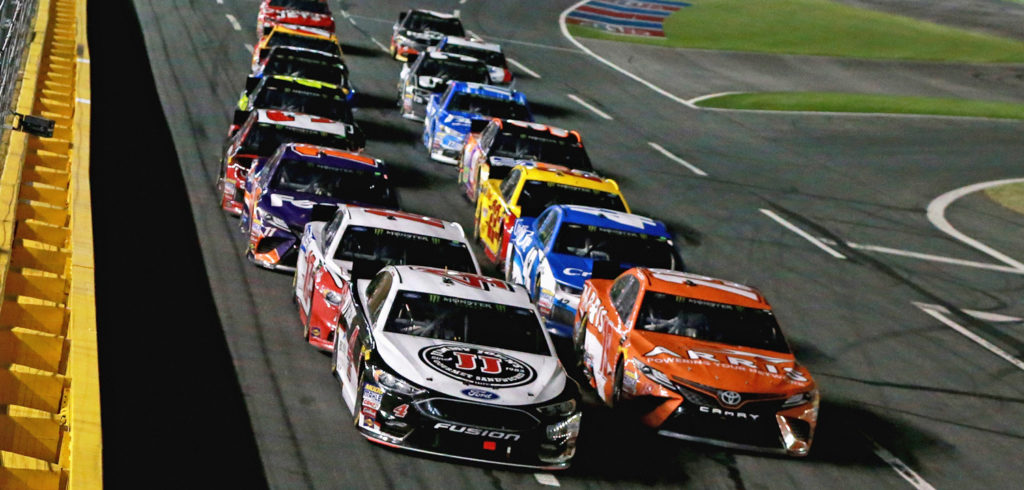NASCAR has revealed its 2019 rules package for the headline Monster Energy Cup series, with changes aimed at improving competition and putting more focus on the abilities of the drivers.
However, series officials admit that the resultant horsepower reduction could help encourage new manufacturers into the sport.
Two separate new rules packages have been introduced for use on tracks that are longer than one mile. They combine a reduction in the diameter of the tapered spacer that limits engine horsepower – this decreasing from 1.17in (29.7mm) to 0.922in (23.4mm) – and the adding of aerodynamic ducts at the front of the car.
The spacer is expected to reduce engine power from the current 750hp to closer to 550hp, while the ducts will channel air away from the front tires, minimizing the aero advantage in undisturbed air enjoyed by a leading car.
Both the new spacers and the ducts will be mandated for 17 of the 23 races in the 2019 Monster Energy Cup that are held on the larger ovals. At a further five races, Atlanta, Darlington, Homestead and the two rounds at Pocono, the spacer will be used but not the ducts.
The Daytona 500, opening race of the 2019 season, will run to the traditional superspeedway rules with restrictor plates cutting engine power to 410hp. But for the first time in 32 years the second Daytona race in July and the two races at the Talladega Superspeedway will not use restrictor plates, instead relying on the spacer/duct combination to cut speeds to manageable levels.
Further aerodynamic changes are being mandated, with NASCAR reversing its recent trend of cutting downforce. At all races the height of the 61in (1549.4mm) rear spoiler will increase significantly from 2.375in (60.3mm) to 8in (203.2mm), while the front splitter will be larger with a 2in (50.8mm) overhang. The radiator pan, effectively an aerodynamic underside to the engine, will be wider, 37in (939.8mm) at its front tapering to 31in (787.4mm) at its rear.
According to NASCAR’s chief racing development officer Steve O’Donnell, creating the new package has taken two years. “[It’s seen] probably the most collaborative effort we’ve had across all the industry stakeholders, including the drivers, to get to this package.”
The package was developed using computer simulations and wind-tunnel testing while elements were also tested in the non-points Monster Energy All-Star race at Charlotte in May 2018, and in specific races in NASCAR’s second-division Xfinity Series.
In addition to improving the competition NASCAR hopes that the new package will encourage new OEMs to join Chevrolet, Ford and Toyota in the sport. O’Donnell stated that the sanctioning body continues to have discussions with potential new entrants and a 550hp engine baseline would be a far more attractive entry point to vehicle manufacturers than the current 750hp.
NASCAR is also working toward its ‘Gen-7’ stock car, and the changes will form part of the evolution process.
“For us, it’s really (about) getting back to a true focus on the drivers and what NASCAR is all about — close side-by-side racing and trying to deliver more of that,” O’Donnell concluded.



